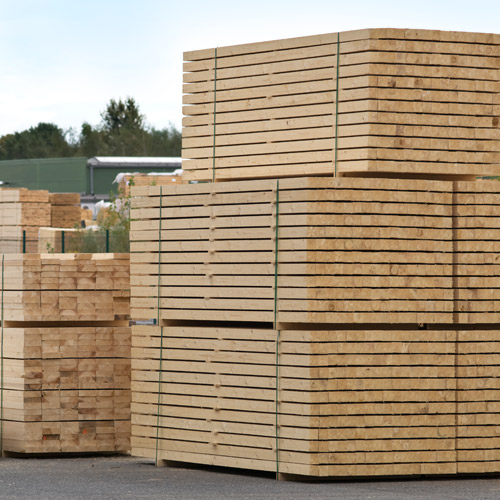
Transformation Processes
At Benoit & Dionne, we distribute, by land and rail, a wide variety of products throughout North America.
Drying
Drying is the first stage of transformation. The wood is stored in a dryer so that it reaches the desired moisture content.
Cutting
The second step is to cut the wood in the desired lengths, dimensions and grade. We can also offer special lengths and dimensions on request.
Precision Trimming
This step involves cutting the pieces to a precise length.
Planing and Custom Planing
The planing stage is important for the production of lumber, because it involves planing the wood to have a nice finish. It is at this stage that the wood is worked according to the desired quality: B1F, B2F or B4F.
Custom planing is a service we offer to anyone who does not have the capacity to do this step. If this is your case, contact us.
Classification and Labelling
Classification and labelling are the last steps in the transformation process. This consists in classifying transformed wood into different categories and is done either mechanically (MSR), or visually classified by a wood filing cabinet.
Following the quality assessment, the wood is tagged with the corporate seal and sent to storage.
Did you know that?
The classification of a piece of wood is based on a visual inspection of characteristics such as the slope of the grain and the location of the nodes?
This inspection is done by wood classifiers, a job which requires training. Wood classifiers check these different characteristics before attaching their quality label:
- Presence of remaining bark on processed wood
- The exact size of the wood
- The location of the nodes
- The slope of the wood grain (the longitudinal axis)
Storage
This is the last step before delivery of the product. It is strategic: it is used to provide a better service for deliveries in a timely manner and when ordering mixed varieties.

